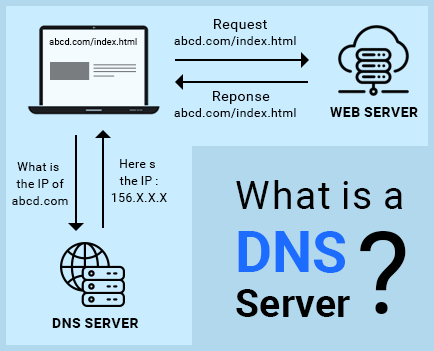
What is DNS management?
DNS management refers to the process of administering Domain Name System (DNS) settings for a domain name. DNS is a crucial component of the internet infrastructure that translates human-readable domain names (like example.com) into IP addresses (like 192.0.2.1) that computers use to identify each other on the network.
Here are some key aspects of DNS management:
Table of Contents
Domain Registration:
This is the initial step where a domain name is registered with a domain registrar. The registrar assigns DNS servers responsible for handling requests for that domain.
DNS Records:
DNS management involves configuring various types of DNS records associated with a domain. Common DNS records include:
Nameservers:
DNS management includes specifying and managing nameservers that store DNS records for a domain. These nameservers are responsible for responding to DNS queries for that domain.
Zone Files:
For more advanced configurations, DNS management involves editing zone files that define DNS records and settings for a domain.
DNS Propagation:
When DNS changes are made (like adding or updating records), DNS management oversees the propagation of these changes across DNS servers worldwide. This process can take time, ranging from a few minutes to several hours, depending on various factors.
Troubleshooting:
DNS management includes troubleshooting DNS-related issues such as resolving domain name resolution problems, diagnosing incorrect DNS settings, and ensuring DNSSEC (DNS Security Extensions) if necessary.
- A record: Maps a domain name to an IPv4 address.
- AAAA record: Maps a domain name to an IPv6 address.
- CNAME record: Alias of one domain name to another.
- MX record: Specifies the mail servers responsible for accepting email messages on behalf of the domain.
- TXT record: Stores text-based information, often used for verification or to provide information about the domain.
- NS record: Specifies the authoritative name servers for the domain.
DNS management is typically done through a domain registrar’s control panel, a hosting provider’s dashboard, or specialized DNS management tools provided by various DNS service providers. Efficient DNS management ensures that a domain resolves correctly and services like websites, emails, and other online services associated with the domain work smoothly.
How does it works ?

he Domain Name System (DNS) works as a decentralized system that translates human-readable domain names (like example.com) into numerical IP addresses (like 192.0.2.1) that computers use to identify each other on the internet. Here’s a simplified explanation of how DNS works:
DNS Hierarchy and Zones:
- DNS operates in a hierarchical structure, starting with the root domain at the top (.).
- Below the root are top-level domains (TLDs) like .com, .net, .org, etc.
- Each domain can have subdomains (e.g., subdomain.example.com).
DNS Servers:
- DNS servers are categorized into different types:
- Root DNS Servers: These are the starting point of DNS resolution. They point to the authoritative name servers for each TLD.
- TLD Name Servers: These servers maintain information about domains under specific TLDs (like .com or .net).
- Authoritative Name Servers: These servers store DNS records (A, AAAA, CNAME, MX, etc.) for specific domains or subdomains. They provide authoritative answers about those domains.
DNS Query Process:
- When you type a domain name (e.g., www.example.com) into a web browser, your device sends a DNS query to a DNS resolver (usually provided by your ISP or configured in your network settings).
- The resolver checks its cache to see if it has recently resolved that domain name. If not, it proceeds with the DNS resolution process.
Recursive DNS Resolution:
- If the resolver does not have the requested domain name in its cache, it starts a recursive query process:
- It queries the root DNS servers to find out the authoritative name servers for the TLD (.com, for example).
- It then queries the TLD name servers to find out the authoritative name servers for the domain (example.com).
- Finally, it queries the authoritative name servers of example.com to get the IP address associated with www.example.com.
Caching:
- DNS resolvers and clients cache DNS records to speed up subsequent queries and reduce load on DNS servers. Records have a TTL (Time to Live) value that determines how long they can be cached.
DNS Propagation:
- When changes are made to DNS records (like updating an IP address or adding new records), DNS propagation refers to the time it takes for these changes to be distributed across DNS servers globally. This can take from a few minutes to several hours.
DNS Security (DNSSEC):
- DNSSEC adds security to DNS by providing authentication and integrity checking for DNS responses. It helps prevent DNS spoofing and other types of attacks.
In summary, DNS is fundamental to how the internet functions by translating domain names into IP addresses. It operates through a hierarchical system of DNS servers that work together to resolve queries and ensure users can access websites, send emails, and use other online services seamlessly.


